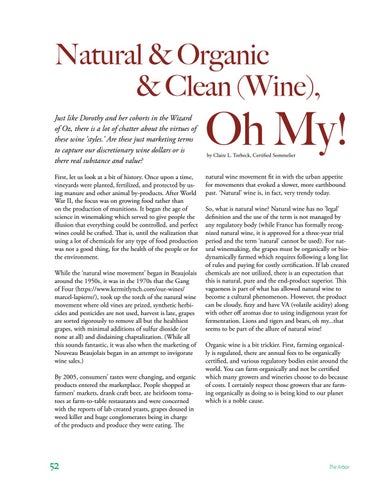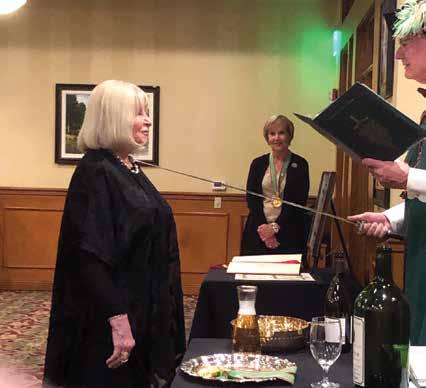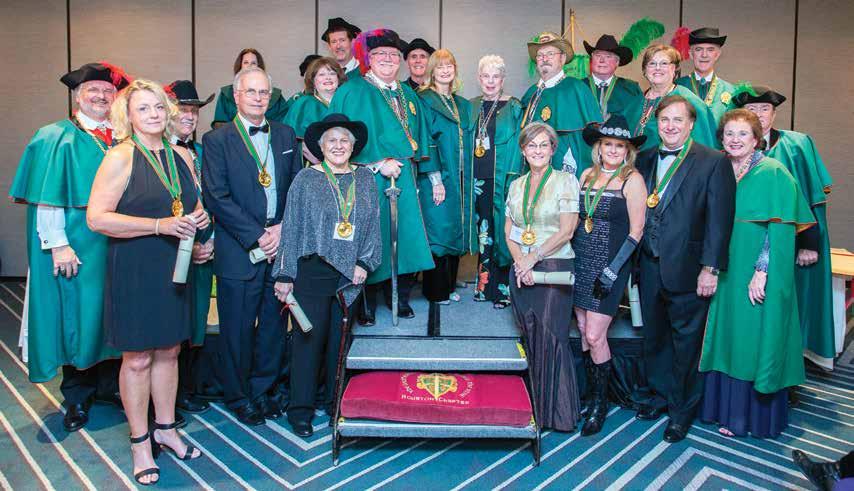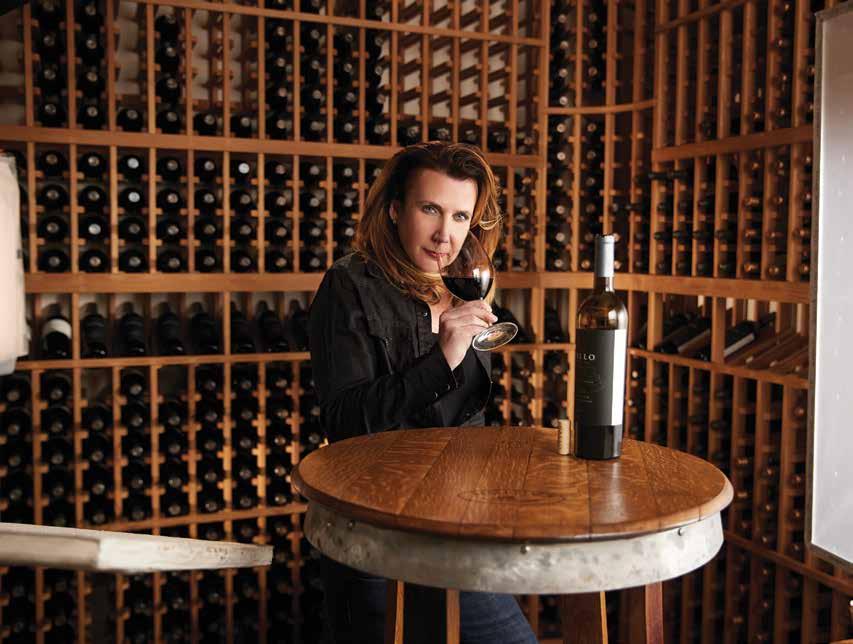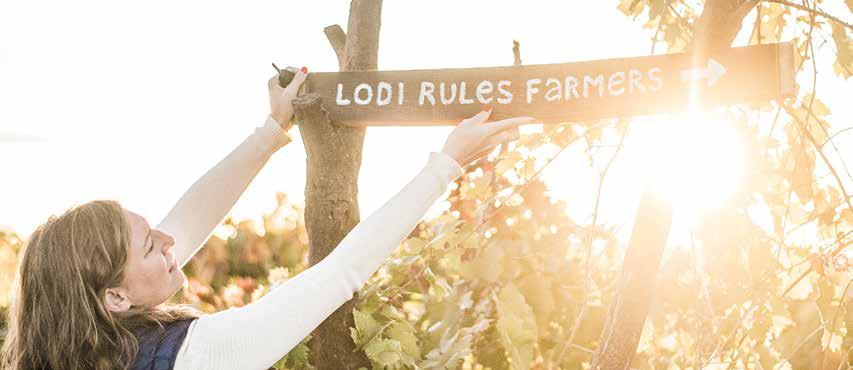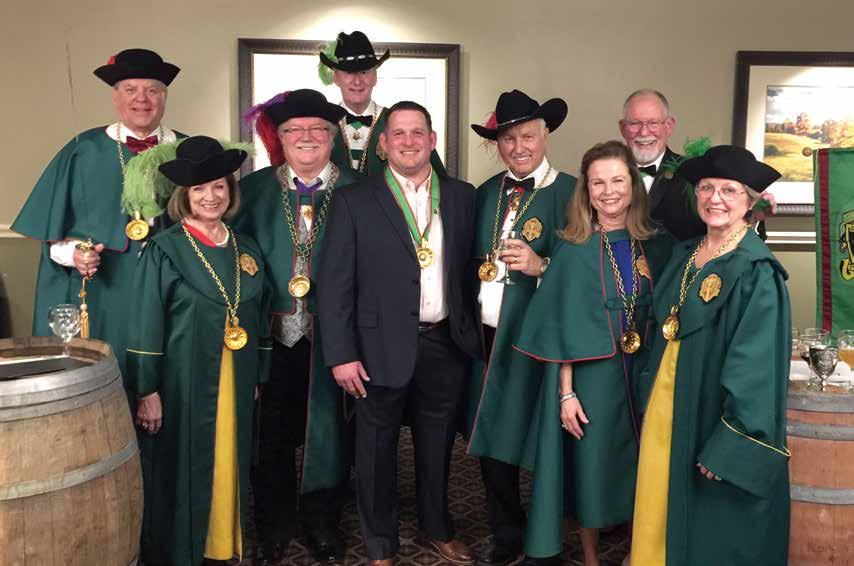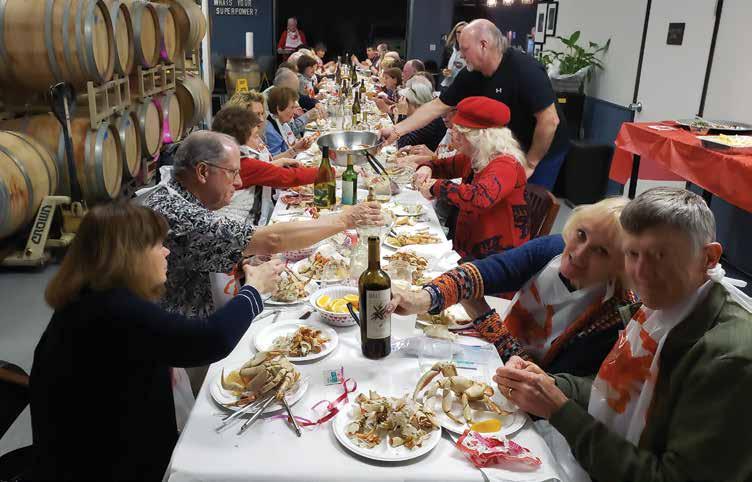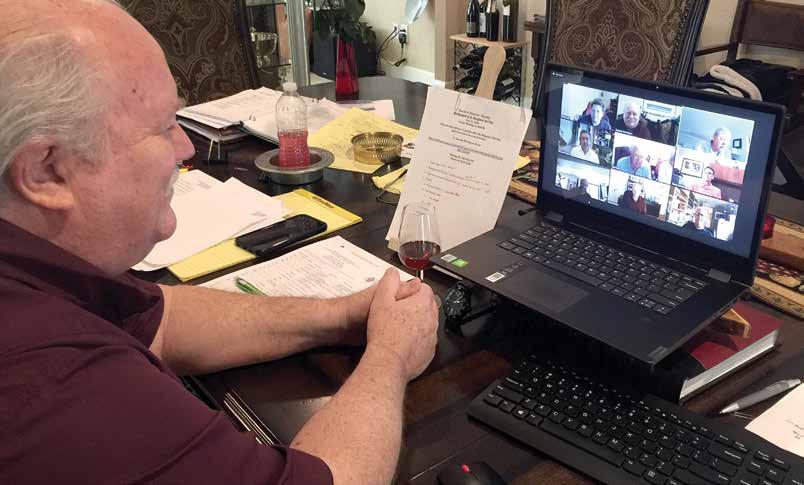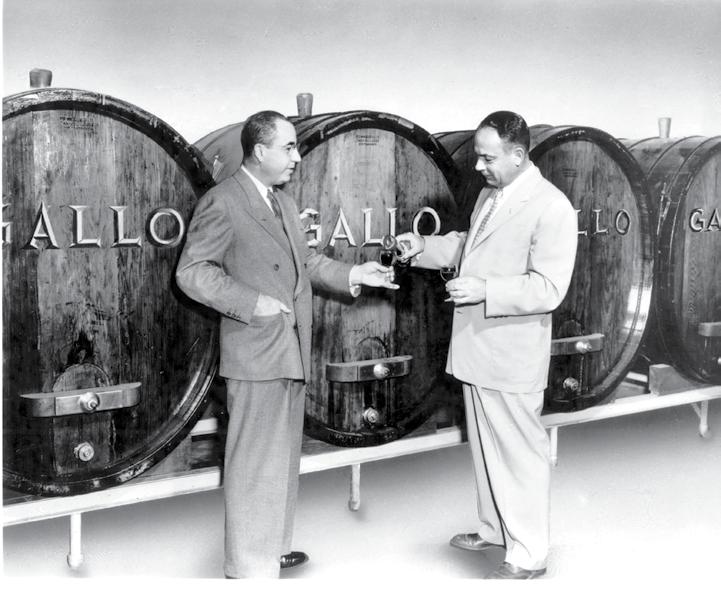Natural & Organic & Clean (Wine), Just like Dorothy and her cohorts in the Wizard of Oz, there is a lot of chatter about the virtues of these wine ‘styles.’ Are these just marketing terms to capture our discretionary wine dollars or is there real substance and value? First, let us look at a bit of history. Once upon a time, vineyards were planted, fertilized, and protected by using manure and other animal by-products. After World War II, the focus was on growing food rather than on the production of munitions. It began the age of science in winemaking which served to give people the illusion that everything could be controlled, and perfect wines could be crafted. That is, until the realization that using a lot of chemicals for any type of food production was not a good thing, for the health of the people or for the environment. While the ‘natural wine movement’ began in Beaujolais around the 1950s, it was in the 1970s that the Gang of Four (https://www.kermitlynch.com/our-wines/ marcel-lapierre/), took up the torch of the natural wine movement where old vines are prized, synthetic herbicides and pesticides are not used, harvest is late, grapes are sorted rigorously to remove all but the healthiest grapes, with minimal additions of sulfur dioxide (or none at all) and disdaining chaptalization. (While all this sounds fantastic, it was also when the marketing of Nouveau Beaujolais began in an attempt to invigorate wine sales.) By 2005, consumers’ tastes were changing, and organic products entered the marketplace. People shopped at farmers’ markets, drank craft beer, ate heirloom tomatoes at farm-to-table restaurants and were concerned with the reports of lab created yeasts, grapes doused in weed killer and huge conglomerates being in charge of the products and produce they were eating. The
52
Oh My! by Claire L. Torbeck, Certified Sommelier
natural wine movement fit in with the urban appetite for movements that evoked a slower, more earthbound past. ‘Natural’ wine is, in fact, very trendy today. So, what is natural wine? Natural wine has no ’legal’ definition and the use of the term is not managed by any regulatory body (while France has formally recognized natural wine, it is approved for a three-year trial period and the term ‘natural’ cannot be used). For natural winemaking, the grapes must be organically or biodynamically farmed which requires following a long list of rules and paying for costly certification. If lab created chemicals are not utilized, there is an expectation that this is natural, pure and the end-product superior. This vagueness is part of what has allowed natural wine to become a cultural phenomenon. However, the product can be cloudy, fizzy and have VA (volatile acidity) along with other off aromas due to using indigenous yeast for fermentation. Lions and tigers and bears, oh my...that seems to be part of the allure of natural wine! Organic wine is a bit trickier. First, farming organically is regulated, there are annual fees to be organically certified, and various regulatory bodies exist around the world. You can farm organically and not be certified which many growers and wineries choose to do because of costs. I certainly respect those growers that are farming organically as doing so is being kind to our planet which is a noble cause.
The Arbor
